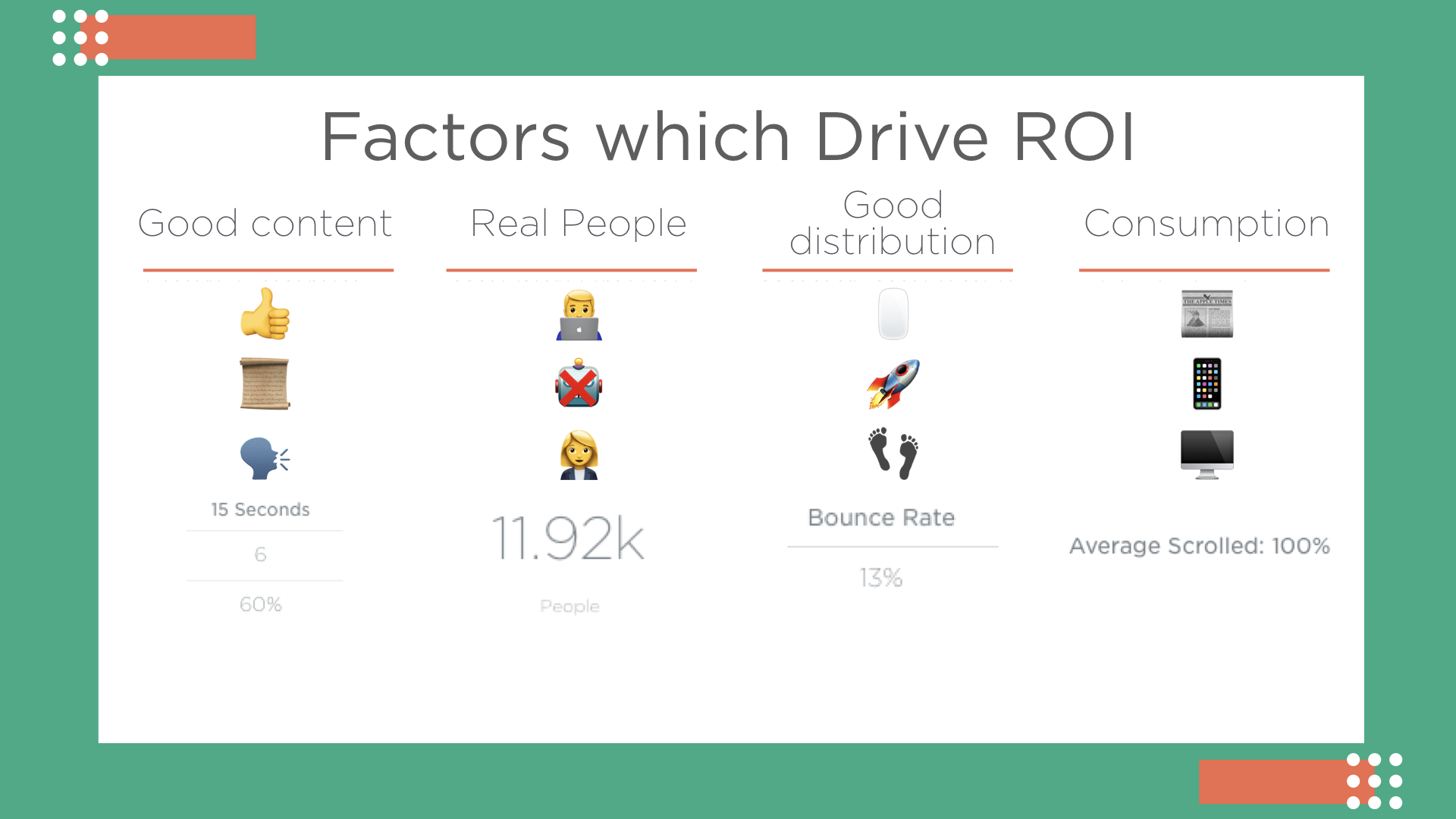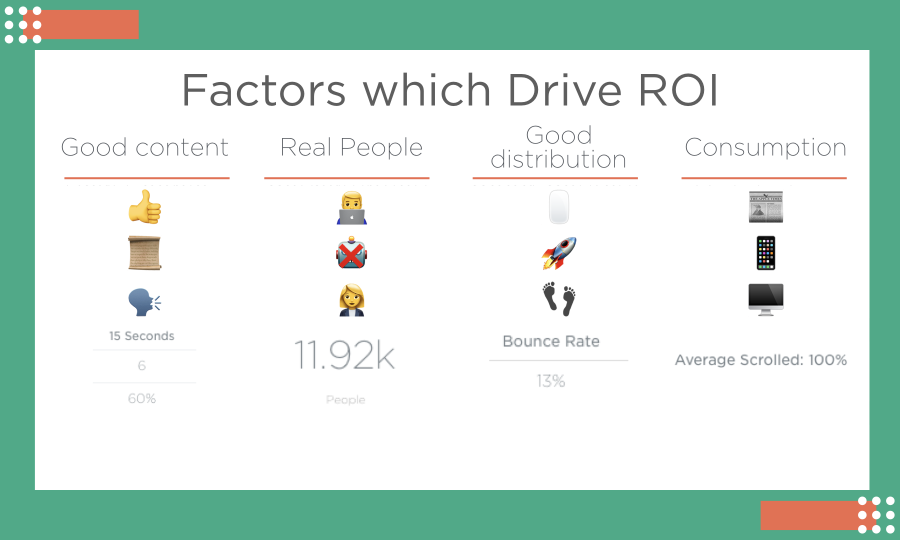This post dives into the factors which drive content return on investment (ROI).
As marketers, we create content to add value for our existing and potential customers. The aim of this content is to build brand loyalty, educate on products and services or tell stories from a unique perspective. The aim is that the people consuming the content view our brand more favorably, and in turn will buy what we’re selling.
That’s where a platform like Nudge comes in. Using their metrics, marketers are able to increase their content’s return on investment.
This is a framework into how that happens.
1. Good content
It all starts with good content and good landing pages. The focus here is quality over quantity. Creating content is expensive, so wouldn’t you rather create fewer pieces that get the job done? For example, while working with Oppenheimer, Nudge helped them cut down from 37 articles to 7 articles by identifying the most effective content.
Like using a new recipe for the first time, content takes time to perfect. Using metrics such as Nudge’s attention, you can identify if people are actually actively engaging with your content. Attention is a metric that weaves through the dashboard as you measure articles and video alike, helping you standardize your metrics. According to Nudge data, higher attention rates are correlated to more conversions.
Other helpful metric are engagement rates and virality. People share content that they are fond of, and if these metrics are high you know that your content is good.
2. Real People
Next, you want to know that real people are consuming your content. After all, you’re creating it so that your potential customers can see it. You can measure this using our people metric, which indicates how many unique visitors you get. Because of the way that we measure content, we are also able to identify and remove bot traffic. They have certain behavior patterns that humans don’t exhibit.
Not all bots are bad. According to Nudge data, 15% of traffic to content comes from good bots.
Examples of these are bots that generate the links in iMessage, or bots that scan content for safety as it’s shared on Facebook. Nudge has been able to catch an influx of fraudulent traffic for some of our enterprise clients – you can learn more here.
3. Good content distribution
3) Good distribution is important. Your audience can’t interact with your content if it doesn’t reach them. That’s why Nudge provides you with distribution insights. Nudge ranks traffic sources by attention, scroll, and bounce rate. It’s worth noting that the platform measures bounce a bit differently than other platforms. If someone spends more than 5 seconds on your content we no longer consider it a bounce.
Traffic sources are valuable if they bring low bounce and high attention. It means you’ve hit the right audience. Using our distribution insights you can visualize the top performers and see which sources aren’t working. Turn them off to instantly see ROI.
Nudge also provide auto-generated insights with tips on your best performing social channels and the times of day when your content gets the most attention and engagement. Here’s a post with more in-depth information on how using Nudge’s features can help you optimize your distribution.
5. Content is being consumed
Last but not least, you want to ensure that your content is being consumed. Metrics such as scroll depth can give you an understanding of how people are interacting with your content. There’s an element of QA – if people drop-off early on, you will be notified that there is an issue. Being able to see where exactly people are dropping off, you can make sure to add your call to actions before that point, helping drive conversions.
Nudges provides a time to scroll metric to help you understand how your audience is engaging with the content. Mentioned earlier, attention is important here too – you want to know that people are spending time with your content.
Summary
These four factors work in conjunction to bring you success. It’s quite simple. Good content needs to reach the right audience and to be consumed. Only then will it influence your audience. Keeping a pulse on how these elements perform separately can help you identify gaps in your strategy and where you need to improve. Furthermore, as you’re investing in content, your spend should be 5:1 distribution to content creation.
Nudge helps guide your content along the way with a variety of metrics for optimizing the distribution and ensuring consumption.
This is part of our Guide to Content Marketing Analytics.

|
|---|

